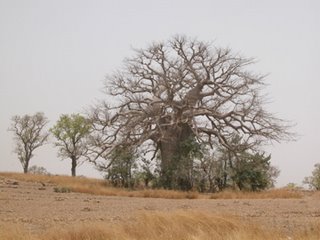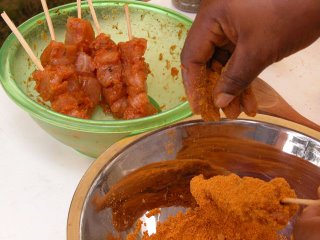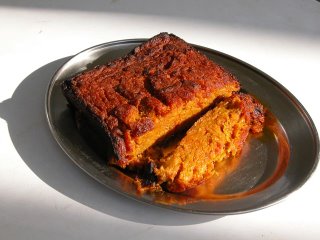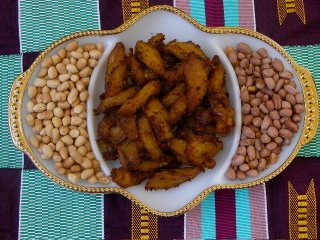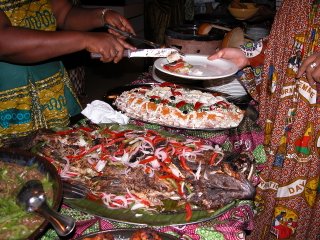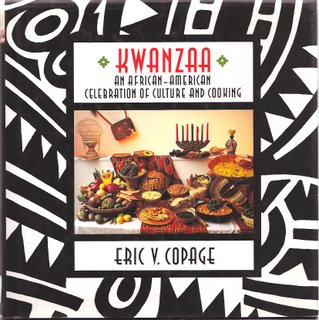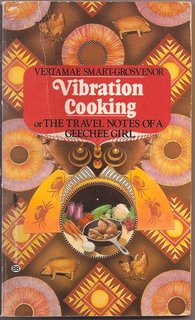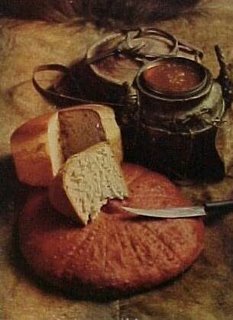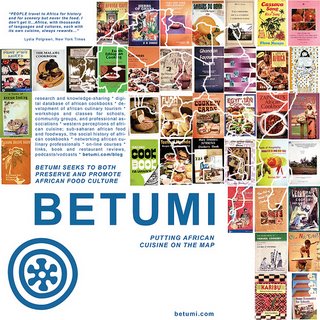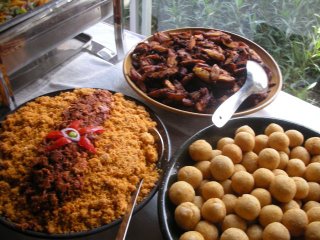Question 5; Why should I be interested in African cuisines?

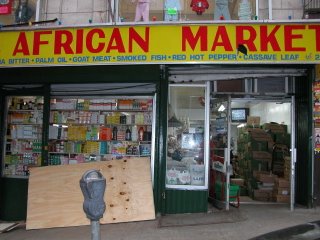 This could also be called the "Who cares?" or "So what?" question. Here we get to the crux of the matter. Where to begin to answer it?
This could also be called the "Who cares?" or "So what?" question. Here we get to the crux of the matter. Where to begin to answer it?First, consider a U.S. automaker analogy. Today's U.S. auto industry is in so much trouble partly because it didn't understand the world was changing. That the needs and interests of car buyers were changing. The same is true in the culinary world. Global culinary rules are shifting. There was a thoughtful article in our local newspaper recently by food writer Ann Quinn Corr, who began her article: by saying that ". . .there are questions that haven't been discussed on any of the talk shows: Will the food served in the White House reflect the multicultural background of our president? Will African dishes be on the table in the White House?" In the U.S. we have a president whose father was from one of "those places"--Kenya in East Africa, with its Swahili coastal influences. Look at President Obama's cabinet members and at the changes taking place in our communities, in our universities, in other words, everywhere. So, we should care because the world is changing. Our neighbors and our neighborhoods are changing.
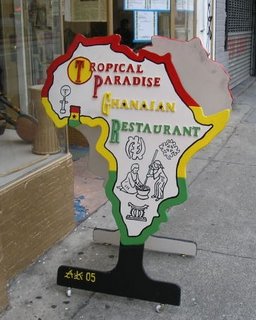
There are now sizable numbers of immigrants from all parts of Africa. They are introducing their foods into our culture, just as Italian and Irish and Polish and Chinese and Jewish, etc., people of earlier generations did. The annual African cultural Ghanafest in Chicago, for example, is entering its 20th year and attracts many thousands of people every July. Other African cultural festivals are held in Texas, California, Maryland, Georgia, Massachusetts, etc. Many large urban cities now sport mobile West African food trucks, and small family-style restaurants are emerging as well., both in cities and university towns. Today's blog features a few pictures I took in New York, Chicago, and Berkeley. Plus there's one from a local store, The African Market, in State College, Pennsylvania. There are reportedly over a million African immigrants in the U.S., and most of them entered between 1990 and 2000. This is probably undercounted by hundreds of thousands of undocumented immigrants as well. The phenomenon of emerging African churches and mosques in the U.S., and African missionaries, is another sign of the changing times. These are basically demographic, sociocultural kinds of reasons.
There are good culinary reasons, too. For example, discovering fresh ideas for cooking: new ways of using familiar ingredients, like peanuts or black-eyed peas (e.g., groundnut stews/soups or steamed bean puddings or fritters), as well as using new ingredients in familiar ways (ripe plantain pancakes or green plantain chips), along with finding new ingredients and new processing techniques (e.g., using things like cassava, taro, fresh coconut, millet), that can enrich and energize our diets.

Some other attractive reasons: the growing "slow-foods" movement that savors fresh, local ingredients slowly simmered is a good fit for many African one-pot dishes that can be cooked in a crock pot and/or frozen and taste even better when the flavors have had a chance to meld. They're also fast to reheat in the microwave.
The creative one-pot dishes of many African cuisines are great budget-stretching ways to include vegetables with protein sources like meat or fish or poultry adding flavor without taking over the entire stage. They're a lot easier to serve and clean up, too. Also, they introduce us to the possibilities of pureed vegetables or beans or nuts to thicken our soups or stews instead of cream, or invite us to use smoked or dried meat and fish and poultry to infuse hearty, comforting flavors to our dishes.
Africans can introduce us to new, interesting seasonings and spices, like "tiger nuts" (chufa) or tamarind or "grains of paradise" or lemongrass or dried hibiscus flowers. . . Plus, we are just beginning to really appreciate some of the health benefits of chili peppers.
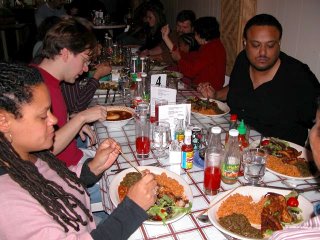 Westerners are already beginning to embrace some of the flavors of African plants, such as the soothing and healthful rooibos (redbush) or honeybush tea leaves of South Africa. Ethiopia is reputed to be where coffee originated and it has a long and impressive history associated with it there.
Westerners are already beginning to embrace some of the flavors of African plants, such as the soothing and healthful rooibos (redbush) or honeybush tea leaves of South Africa. Ethiopia is reputed to be where coffee originated and it has a long and impressive history associated with it there.Many Africans get their calcium from other sources than milk, and a Ghanaian diet, for example, is ideal for people who are lactose intolerant. The same is true for those who are allergic to wheat, which is an imported ingredients in the diets of most West Africans, and where flours are made of many other grains from rice to cassava.
In other words, we are enriched by the diversity that comes from learning from other people's creativity. As Alan Dundes (my college anthropology professor) also said, at least I think it was him "To see is to adjust the vision." Or as a Ghanaian proverb puts it, "The stranger's eyes are big with looking, but he/she doesn't see anything." Actually, while it's true that the person who doesn't know where to look will miss many things, it's also true that we see what we expect to see. If we look for boring, insipid food from Africa, that's what we'll see. If we expect wonderful, interesting, flavorful, exciting food, it's right
there waiting for us.
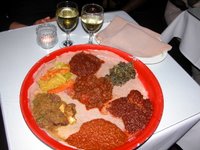
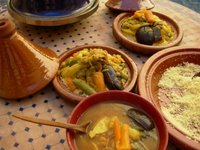

Labels: african foods, african immigrants, african restaurants
